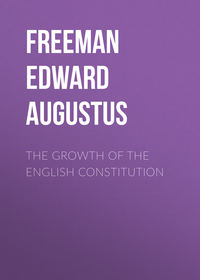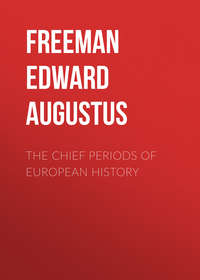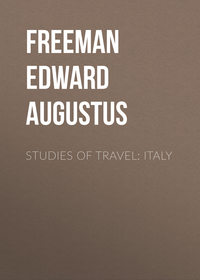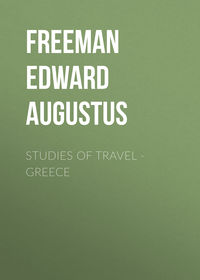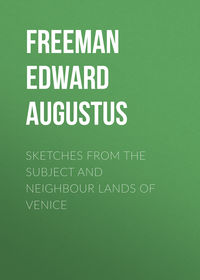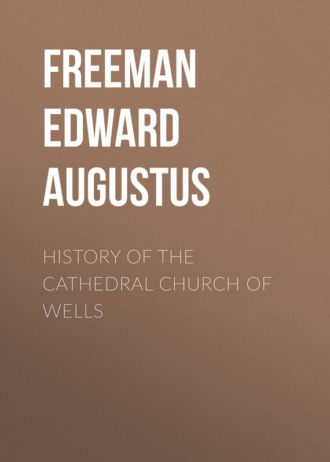 полная версия
полная версияHistory of the Cathedral Church of Wells
88
The account is given by William Fitz-Stephen, Giles, i. 257. The officiating priest is described as "quidam vicarius, Vitalis nomine, homo timoratus et honestus sacerdos." Berengar, the Archbishop's emissary, addresses him, "Non est his hujus sedis Episcopus, sed neque Decanus: video te hic ministrum Jesu Christi."
89
Angl. Sac. i. 564: "Vicarios in ecclesiâ singulis Præbendariis ordinavit, tribus exceptis quibus non provisit morte præventus."
Mr. Haddan, in the new collection of Councils and Ecclesiastical Documents (i. 393), prints an account of the Church of Llandaff, 1193-1218. Bishop Henry of Abergavenny founded fourteen prebends, the duties of eight of which were to be discharged ("defungi debent") by Priest Vicars ("Vicarii Sacerdotes"), four by Deacons, and two by Subdeacons. The fourteen Vicars have now dwindled to two.
90
Ang. Sacr. i. 563. "Hic erexit ecclesias parochiales de Ilmestre et Longe-Sutton in præbendas ecclesiæ Wellensis; quarum primam Abbati de Muchelney, secundam Abbati de Athelney et eorum successoribus contulit in perpetuam possidendas." These prebends no longer exist, having vanished along with the monasteries by whose Abbots they were held.
91
This most important statute is printed in the Monasticon, ii. pp. 291, 292. Its date is 1242, the thirty-seventh year of Jocelin's episcopate. He records what he had done for the fabric of the church, which he found dangerous by reason of age ("periculum ruinæ patiebatur pro suâ vetustate." See above, p. 67). He had built, enlarged, and consecrated it ("ædificare cœpimus et ampliare, in quâ … adeo profecimus, quod ipsam … consecravimus"). Then he goes on to say that the common ("communa") revenues of the ministers of the church had hitherto been scanty ("tenuis et insufficiens"), and that he had done much to enlarge it. It would seem then that the greater part of the estates of the church had been cut up into separate prebends, and that, before Jocelin's gift, the Chapter as a body kept but little. He then recites the consent of the Dean and Chapter to his ordinance in words which mark a very different relation between the Bishop and his Chapter from what had been in the days of Gisa and John of Tours. The change is made "consensu Johannis Sarraceni, Decani, et Capituli nostri Wellensis, qui pure et simpliciter et absolute, de merâ et spontaneâ voluntate suâ, nostræ super hoc se supposuerunt ordinationi et statuto." Then come the rules by which the Bishop, the Dean and the other dignitaries, the other Canons, and the Vicars, were on each day of residence to receive certain sums of money. They had hitherto received their daily portion, partly in money, partly in bread. The amount was now raised, and it was paid wholly in money. The Bishop had thirteen pence, the Dean and other dignitaries twelve pence, each simple Canon sixpence, each Vicar a penny, for each day of residence. At the end of the year the overplus was to be divided among those Canons who had kept the prescribed residence, which is thus defined: "Residentes autem interpretamur quoad participationem residui in fine anni omnes illos Canonicos qui per medium annum, sive continue sive interpolatim, fecerint in villam [sic] residentiam, præter Decanum, Præcentorem, Cancellarium, et Thesaurarium, quos interpretamur residentes si per duas partes anni fecerint residentiam sive continue sive interpolatim."
Each Canon had thus three available sources of income, his own prebend, the daily distribution, and the distribution at the end of the year. The first was irrespective of residence, the latter two depended on residence.
92
I have to thank Mr. Serel for a manuscript extract containing some details of this strange practice, as it stood at Wells. In the fourteenth century the custom was that each Canon, at the beginning of his residence, should feast the Bishop, Dean, Canons, Vicars, and all other officers of the church ("quoscumque alios dictæ ecclesiæ ministros"), at a cost which often reached two hundred marks (133l. 6s. 8d.), or even a hundred and fifty pounds; sums which, at the then value of money, must have been enormous, and which contrast strikingly with the pence and loaves of the older daily distribution. In a bull of Pope Boniface the Ninth, in the year 1400, this custom is condemned; it is pronounced to be "consuetudo quæ corruptela potius est dicenda," and he speaks of the cost as "inutiles sumptus ac expensæ." Instead of this waste upon eating and drinking, each simple Canon, on his admission to residence, is to pay a hundred marks, and each dignitary a hundred and fifty, to the maintenance of the fabric, and the support of the other burthens of the church ("in subsidium sustentationis fabricæ et relevamen supportationis aliorum onerum"). This was a very heavy tax, and might hinder many from residing; still, at least, the money went to a good end. This was presently so interpreted that the Dean and Residentiaries gave out of each sum so paid ten marks to the fabric, ten to the Vicars, and divided the rest among themselves. This practice was confirmed by a second bull of Pope Nicolas the Fifth, in 1433; and these regulations were confirmed by Henry the Eighth in 1539, at the advice of Lord Cromwell, who, it is not to be forgotten, would, as Dean (see p. 148), receive a share of the spoil.
Notwithstanding the commutation of the burthen from a feast to a fixed sum of money, it appears that it again became usual, "not only to pay these sums of money upon admission to a Canonry [that is, on admission to residence], but also to make a prodigious entertainment for the Bishop, Dean and Chapter [meaning the Dean and Residentiaries], the Prebendaries in town, Vicars, Proctors of the Court, and Officers of the church, and their wives, and also for the Mayor and Corporation, and other principal inhabitants of the Liberty and City."
The Canons' and Vicars' wives were certainly not contemplated either by Pope Boniface or by King Harry.
93
This and all other points in the constitution of the Chapter of Saint David's has been treated of by Archdeacon Jones, in our History of Saint David's, p. 310, et seqq. The Saint David's history is throughout worth comparing with the Wells' history.
94
In the Charter of Elizabeth, of which I shall have to speak again, each of eight Residentiaries is required to reside three months in the year; and, if a Dignitary, four. This arrangement would always give two Canons at least in residence at once.
95
The round, rather than polygonal, chapter-house at Worcester, where the style is still Romanesque, is probably the earliest example, and that at Howden the latest. Lincoln, Westminster, Salisbury, Lichfield, and Margam, are also examples. The earlier and later chapter-houses, as at Canterbury, Durham, Bristol, and Exeter, are oblong, sometimes with an apsidal end.
96
The grandest example of these undercrofts that I know of is under the dormitory of Battle Abbey. The arrangements of the church were ruled by the position of the high altar, which marked the site of the English standard. The result was that the dormitory was driven over the side of the hill, and had therefore to be supported by an undercroft, which at the extreme southern end rises to a prodigious height.
The undercroft of the Wells chapter-house is no more a crypt than the undercroft of the palace, or than the chapter-house at Llandaff, which simply consists of four bays of vaulting, with a central pillar, just like many undercrofts of this kind.
The undercroft of the palace at Wells has its parallel at an earlier time in the magnificent example of Romanesque date in the Bishop's palace at Angers.
97
I must here quote Professor Willis, as reported in the Bristol Volume, p. xxviii. "The first thing to be noticed is under date 1286, when a Chapter was called together, and there was laid before them the urgent necessity which appeared from the state of the church, not only that the new structure, which had been a long time begun, should be finished, but that the whole fabric might be repaired and sustained, and such new constructions as were requisite be carried out. In 1286, however, comparing the probable date of the building which I suppose to be called the new structure, it can only be the chapter-house; and the lower part of it, commonly called the crypt, was, as I conclude, then completed… The structure of the chapter-house consists of two parts, and it is quite evident that the crypt was separated from the upper part by a very considerable interval. I conceive, therefore, that in 1286 the portion of the chapter-house called the crypt was completed." In the Somersetshire Transactions, xii. 19, the Professor adds that "it was agreed that each Canon should pay a tenth of his prebend yearly for five years."
Bishop Godwin says (p. 300) of Bishop William of March, "In this mans time [1293-1302] the chapter-house was built, by the contribution of well-disposed people; a stately and sumptuous worke." Godwin wrote, I suppose, from local tradition, as there is nothing like it in the Canon's history in Anglia Sacra. His date quite falls in with the Professor's extracts.
98
The Early English fragments which have been built up in the chapel in the Vicars' Close, as well as those which are lying about in the undercroft of the chapter-house, can hardly fail to belong to the destroyed east end. Yet the fragments in the Vicars' chapel agree rather with the style of the west front than with that of the other parts of the church; and they agree with the fragments built into the rectory-house at Wookey (now called, without any reason, Mellifont Abbey), which can hardly fail to have been parts of Jocelin's house there. The fragments in the undercroft have the tooth-moulding, which, I think, is not found anywhere else in the church, though it is in the undercroft of the chapter-house.
As for the actual form of the east end, it is plain that it was not an apse, nor yet a square east end of the full height, like York, Ely, and Southwell. It will be seen on the ground-plan that the aisles of Jocelin's work run a bay to the east of the site of his high altar. This shows that there was a procession-path and most likely a chapel beyond it on the site of the present presbytery, though it is possible that it ended in a mere retrochoir, like that at Abbey Dore, or that carried round the northern apse at Peterborough.
99
The church of Glastonbury is, I need not say, of far more ancient foundation than that of Wells; it was its junior simply as a cathedral church. Bath is immeasurably older than Wells as a city, and as a church also, if we accept the foundation of Osric in 676. Even the foundation of Offa in 775 comes before Wells had gained any importance. See Monasticon, ii. 256, though it is hard to understand how a monastery could be destroyed by Danes before the time of Offa.
100
Angl. Sacra, i. 564. "Hic sibi similem anteriorem non habuit, nec hucusque visus est habere sequentem."
101
Ib. "Tandem defunctus, in medio chori Welliæ honorifice sepelitur." Godwin adds, "He was buried in the middle of the Quier that he had built, under a Marble tombe of late yeeres monsterously defaced."
102
The story, as given by the Canon of Wells, may be read at length in Anglia Sacra, i. 564, with Wharton's note, and more briefly in Godwin's quaint English, p. 297. It is summed up in the Tewkesbury Annals (Ann. Mon. i. 133): "Magister Rogerus Cantor Sarum eligitur in Episcopum Bathoniæ. Confirmatur a Domino Papâ, non obstantibus cavillationibus Canonicorum Wellensium. Consecratur, intronizatur, et Dominus Rex reddidit ei omnia temporalia, in Junio." This annalist, as a monk, looks on the complaints of the seculars of Wells as "cavillationes."
103
Anglia Sacra, i. 565. "Unde Episcopus Rogerus in tantum ita instantius penes Papam procuravit, quod ipse pacem fecit inter partes prædictas, et formam apposuit in eorum mutuis electionibus de cætero faciendis, quæ usque hodie observatur."
104
The chief of these were the custodia or wardship of the Deanery, i. e. the profits of the decanal estate during a vacancy, which had no doubt hitherto gone to the Bishop as superior Lord, as those of the Bishoprick itself went to the King. He also gave them two-thirds of the profits of all the parish churches in the diocese during their vacancies, which had hitherto gone to the Bishop; the remaining third he gave to the Archdeacons.
105
Godwin gives the list in p. 298. His burial in the Lady chapel in the cloister has been already mentioned; see above, p. 17.
106
Anglia Sacra, i. 566. "Ubi ad præsens multis fulget miraculis."
107
Ib., 567. "Ad cujus tumbam olim multa præclara fiebant miracula." The wonders at the tomb of William of March seem to have ceased when the Canon wrote, while those at the tomb of William Button still went on. This agrees with what Godwin says, p. 299: "Many superstitious people (especially such as were troubled with the tooth-ake) were wont (even of late yeeres) to frequent much the place of his buriall, being without the North side of the Quier, where we see a Marble stone, having a pontificall image graven upon it."
108
His building of the hall is mentioned in Anglia Sacra, i. 567, as also the advancement of his own family. So Godwin, 299, who speaks of "That goodly hall of the pallace at Welles, pulled downe some fifty yeeres since by a knight of the court, that for a just reward of his sacrilege, soone after lost his head." This means Sir John Gates, of whom more anon. Robert Burnell was first Treasurer and then Chancellor of England, and in 1278 was elected Archbishop of Canterbury, but the election was annulled by Pope Nicolas IV. In Rymer's Fœdera, vol. i. part ii. p. 559, will be found a letter of Edward I. to the Pope on behalf of his Chancellor. He speaks of the "fidelitatis suæ constantia quam ad recolendæ memoriæ dominum, Henricum Regem Angliæ, illustrem genitorem nostrum, et nos ac totam ecclesiam Anglicanam semper hactenus habuit incorruptam, et a quâ nullo umquam tempore nubulo vel sereno flecti potuit seu etiam deviare." He also calls him "vir tam in temporalibus quam in spiritualibus circumspectus, vir mitis, affabilis, vir benignus, vir etiam misericordiæ, mansuetudinis, caritatis, et pacis." Two of his brothers were drowned in 1282, in the Welsh war; see Trivet, p. 305.
On the works of Gower at St. David's, see the History of St. David's, pp. 190-194.
109
I must again quote Professor Willis, in the Somersetshire Proceedings, xii. 19. "In 1326 a grant of the land at the east end of the Cathedral by the bishop to one of the canons, measures its length of fifty feet eastward from the wall of the newly-constructed chapel of the Blessed Mary." This plainly means the Lady chapel at the east end, distinguished as a new building from the older Lady chapel in the cloister. The Bishop is, of course, John Drokensford, Bishop from 1309-1329. In the Bristol report of Professor Willis (p. xxix.) he is strangely called Tokenfield, which I am sure is not the Professor's own description of him.
110
Of the coved or waggon roofs of the West of England and South Wales, which modern church-restorers generally think it such a great feat to get rid of, I have written and spoken till I am nearly tired of the subject. The arch employed is of all manner of forms, but in a wooden construction the semicircular arch has the best effect. A roof of this sort is the same thing in wood which a barrel-vault is in stone, and the vault of the choir at Wells is a barrel-vault, modified by the clerestory windows. Earlier barrel-vaults of Romanesque date, identical in principle with the Somersetshire wooden roofs, may be seen in Saint Sernin at Toulouse and the chapel in the White Tower of London, and, to come nearer home, in the priory church of Ewenny in Glamorganshire.
111
Somersetshire Archæological Proceedings, xii. 19. "In 1325 the bishop gave half the proceeds of his visitation to the 'novum opus' of the church at Wells, and an order was made that, because the stalls were ruinous and misshapen, every canon should pay for making his own new stall, and the dean sent to Midelton for boards to make the new stalls." Midelton is what we now call Milton. The Dean was John Godele, Dean from 1308 to 1333. The Bishop was of course Ralph.
112
Anglia Sacra, i. 569. "Sepultus in presbyterio ecclesiæ Wellensis inter gradus chori et summum altare in tumbâ de alabastro, cui imago supponitur valde conforma figuræ illius."
113
Godwin, p. 302. "His body was buried before the high altar under a goodly monument of Alabaster, compassed about with grates of yron. About a 60 yeeres since (for what cause I know not) it was remooved to the North side of the presbytery, but lost his grates by the way."
114
Somersetshire Archæological Proceedings, xii. 19. "In 1318 receivers were appointed for the tenths, given in aid of the new campanile, and for the oblations to Saint William… In 1321 we find a grant from the clergy of the Deanery of Taunton in aid of the roofing of the new campanile," meaning, not improbably, a wooden spire. By Saint William is meant Bishop William of March; see p. 107.
115
Ib., 21. "In 1337 a convocation was summoned to consider, among other matters, the raising of money by the non-residents for paying a debt of 200 li. incurred for the restoration of the greatest part of the fabric. In 1338 another Convocation was summoned, because the church of Wells is so enormously fractured and deformed ('enormiter confracta … totaliter confracte et enormiter deformate'), that its structure can only be repaired, and with sufficient promptitude, by the common counsel and assistance of its members." This evidently means, as the Professor explains it, the damage done by the weight of the new tower, and the props which we now see are evidently the result of the repairs then ordered.
116
The likeness had struck myself independently, but I see that Professor Willis (p. 22) quotes the same name as applied by Leland to the props of the same kind afterwards inserted under the central tower at Glastonbury.
117
Anglia Sacra, i. 570. "Iste ad constructionem occidentalis turris in parte australi Wellensis ecclesiæ duas partes expensarum apposuit; ac pro vitro occidentalis fenestræ ejusdem ecclesiæ centum marcas persolvit; duasque magnas campanas in dictâ turri australi pendentes fieri fecit propriis sumptibus." Godwin (302) adds to the account of the bells, "The bigest of which being cast fower times since I was of this church, now at last serveth for the greatest of a ring, the goodliest for that number (being but five) (I thinke) in England."
118
Godwin, 304. "It is supposed he was a great benefactor and contributor toward the building of the North-west tower at the West ende of the Church, which his armes fixed upon divers places of the same doo partly shew."
119
"He built our Library over the Cloysters," says Godwin, in his account of Bubwith, p. 304. But I do not see how this is to be reconciled with what he says in the next page; "He [Beckington] built (as to me at least wise seemeth) the East side of the cloyster."
120
There are others of the kind, the west front of Exeter for instance, where I suppose that most people would allow that the shape is positively unsightly. The earliest English instance I know of was the Romanesque west front of Malmesbury Abbey. It is now in ruins, owing to the fall of the western tower which was afterwards added. But it is easy to make out that the oldest front had a blank wall between turrets, instead of either towers or the natural endings of the aisles without towers.
121
This arrangement gives the church of Wells and Rouen a sort of western transept. There is also a western transept at Lincoln and at Peterborough, but it is formed in a different way by a projection beyond the towers.
There is something analogous to Wells and Rouen in the west front at Ripon. The towers are now at the ends of the aisles, but, as they were at first without aisles, they must have been built as a projecting transept.
122
This custom of a sham gable or other finish between the towers, having no reference to the gable of the nave, is common both in French and German churches. It is carried to its furthest extreme in the churches of Brunswick, where any one coming from the due west would take each church to be nearly double the height that it really is.
123
I am here speaking of polygonal apses only. In our large Romanesque churches the round apse was commonly used, but their choirs have commonly been altered or destroyed, so that the only round apses that we now have on a very large scale are those of Norwich and Peterborough. In Normandy many more have been preserved, and they are also much more common in smaller churches. Canterbury Cathedral has an apse to the choir of intermediate date, besides the round chapel at the extreme east end, answering in some measure to our polygonal Lady chapel.
124
The Wimborne arrangement of a central and western tower was once much more common than it is now, but in many cases one of the towers has either never been carried up or has been afterwards destroyed, as at Hereford, Shrewsbury, Malmesbury, Bangor, and Christ Church in Hampshire. The arrangement still remains on a vast scale at Ely, and on a smaller at Purton in Wiltshire and in the two lesser churches at Coutances.
125
Anglia Sacra, p. 569. "Episcopale palatium apud Welliam forti muro lapideo circumcinxit, et aquam undique circumduxit;" and again, "Palatium episcopale Wellense muro lapideo batellato et cornellato cum fossatis claudere fecit."
126
Bishop Godwin tells the whole story in his quaint way (p. 301). "This man is famous for the first foundation of our Vicars close in Wels. The memory of which benefit is to be seene expressed in a picture upon the wal at the foot of the hall staires. In it the Vicars kneeling, seeme to request the Bishop in these words:
Per vicos positi villæ, pater alme rogamus,Ut simul uniti, de [te?] dante domos maneamus.Disperst about the towne, we humbly pray,Together, through thy bounty, dwell we may.
He answereth them thus:
Vestra petunt merita, quod sint concessa petita,Ut maneatis ita, loca fecimus hic stabilita.For your demaund, deserts do plead, I will do that you crave,To this purpose established, here dwellings shall you have.
This picture being now almost worne out; at what time of late yeeres the Vicars by the gratious favour of her Maiesty had their revenues confirmed to them, being in danger to be spoyled of them by certaine sacrilegious cormorants; they likewise caused a picture of excellent workmanship to be drawen, contayning a memoriall of both the one and the other. These buildings being erected; toward the maintenance of some hospitality in them, he gave unto that new Colledge, the mannor of Welsleigh, and allotted them twenty nobles yerely to be paid out of the vicarage of Chew. He built moreover a house for the Queristers and their master."
127
See above, p. 173.
128
I must again quote Godwin, p. 306. "To his successor he gave 100l., upon condition he would accept it in lieu of all dilapidations, otherwise willing his executors to spend it in lawe against him: and lastly unto his executors he left onely 20l. a piece, requiring them to imploy all the rest of his goods to good uses at their discretion. They answered very justly, the trust reposed in them, and that with such discretion as well as fidelity, that I should do them wrong not to remember them. The one was Richard Swanne, Provost of Welles and parson of Yevelton, that heretofore had beene executor after the same sort unto Richard Praty Bishop of Chichester (this man dwelt in the cannonicall house that is neere the market place). Another was, Hugh Sugar Doctor of lawe and Treasurer of Welles (he built the chappell all of free stone, which was of wood before, adjoyning to the great pulpit, and dwelt where I now do, in the middle house of the three that joyne upon the Cambray). And the third was John Pope Doctor of Divinity Prebendary of Saint Decumans and parson of Shyre. These three (as I have beene told by old men) lye buried in a ranke together, over against the great pulpit under three marble stones of one fashion. The Bishops goods that remained unbequeathed, they bestowed for the most part, in building the Vicars close at Welles, which had beene begun by Bishop Ralfe long before; a sumptuous and beautifull worke."


